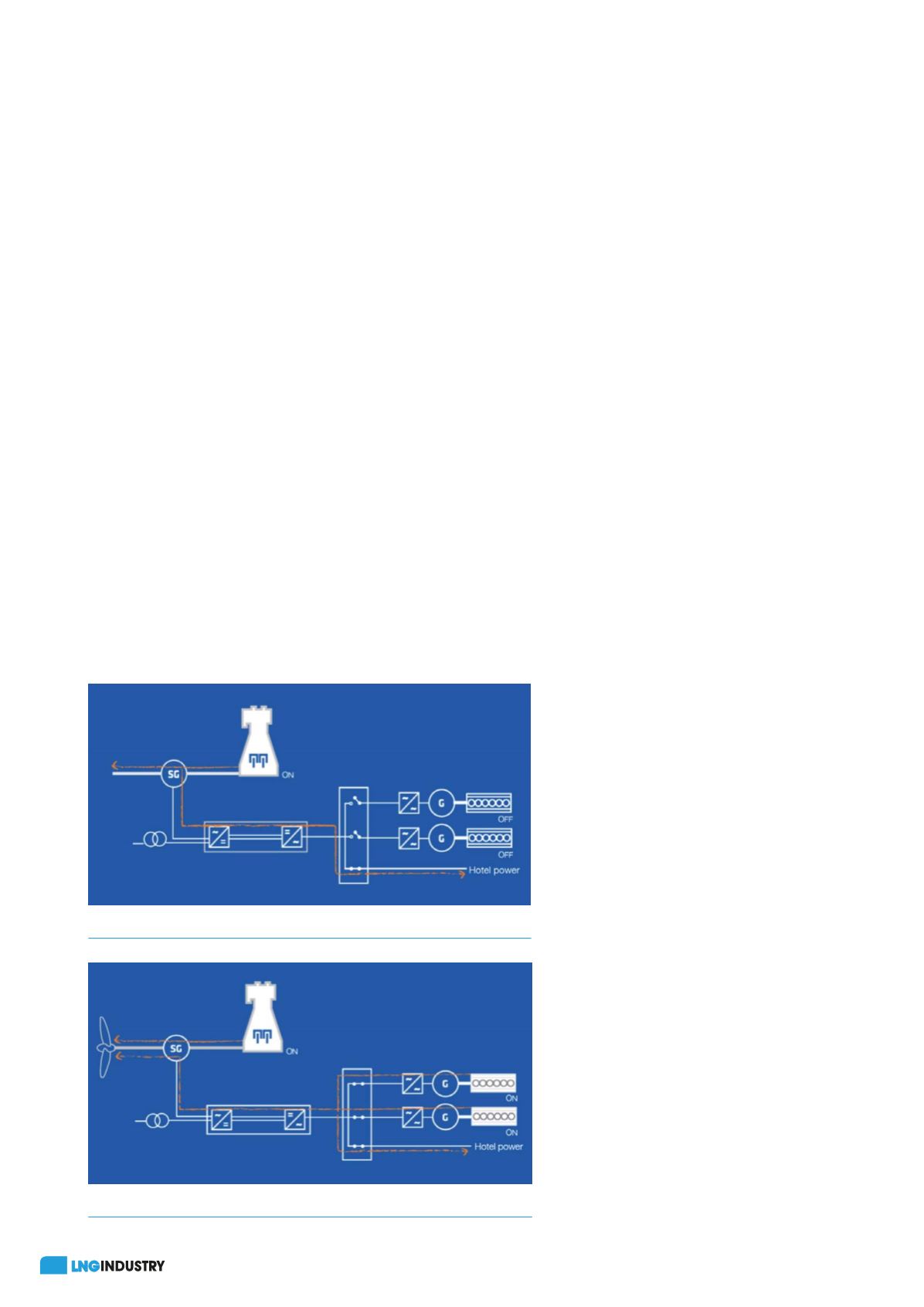
22
January 2020
drive train and to include auxiliary equipment that is not
always adding efficiency when the vessel runs in its
different operational modes.
Optimise according to conditions
Recently, drive trains with permanent magnet (PM)
machines and frequency converters have started to
gain momentum, because they have proved to offer
overwhelming technical advantages for distributed
power generation. The benefits are manifested in better
power production, wider speed operational range, better
electricity quality, as well as more stable voltage and
frequency.
Specifically with today’s small LNG tankers, the benefits
of these advanced drive trains based on PM technology are
bringing shipowners considerable added value.
One application that has caught the attention of the
industry, in particular, is the shaft generator. In this
application, the main engine is connected to a PM machine,
either via a gearbox or directly to the main shaft, to provide
electric power. The power created by the shaft generator is
then fed through a frequency converter, ensuring a stable
grid.
Some operators prefer to take the most from the use of
a shaft generator on board. They have realised that the
machine can be used additionally to boost power in icy
waters or harsh marine conditions or for peak shaving with
the use of batteries, prolonging the life of the main engine.
If this extra functionality is considered already during the
design phase, the main engine size can be smaller when a
shaft generator is used.
When flexibility is needed most
This application also allows a vessel to take full advantage
of various operational modes to achieve top performance
and efficiency on the job.
Operational modes offer a unique opportunity to
optimise and adjust how a ship is run according to the
existing conditions at hand. Moreover, they support the
main engine in special conditions when flexibility is
needed most.
For instance, a vessel can save energy when it has more
time available. Conversely, it can save travel time when
under pressure to reach its next destination.
Power take out
The easiest and cheapest way to use extra power from
the main engine is to capture it with the power take out
(PTO) operational mode, which focuses on helping a vessel
improve its energy efficiency in power production. While
the main engine works as the power plant for the entire
ship, the PM machine works as a generator. The frequency
converter creates the electric grid by transforming the
variable frequency and voltage into constant frequency and
voltage. This constant, high-quality electricity can then be
used by all the consumers connected to the vessel’s grid.
The advantage of the PTO operational mode for LNG
tankers is that the auxiliary gensets can be shut off,
because the shaft generator and main engines produce the
power. This reduces the number of running hours for the
auxiliary generators, or can decrease their size, and cuts
back significantly on maintenance. Fuel efficiency, too,
improves considerably. Even better, the genset can be
completely replaced by a battery.
Especially for a small LNG tanker, this can
lead to more efficient performance at partial
loads, where the vessel spends most of its time
operating in any case, due to the nature of its
task.
Power take in
When extra propulsion power is needed, the
power take in (PTI) mode takes over as an
extra bonus. PTI offers additional flexibility,
increasing both safety and redundancy through
the use of the boost or take me home (TMH)
modes. Boost mode temporarily provides the
main engine with extra power, while TMH
mode kicks in during an emergency if the main
engine is not operational.
The main idea behind PTI mode is that it
can provide an additional or alternative source
of mechanical power for the propulsion. This
raises the level of redundancy in the propulsion
system and increases overall safety.
The PM machine works as a motor, and a
converter ensures the smooth operation of the
PM machine.
Boost mode comes into play when power
peaks are needed, for example, when a small
LNG tanker requires extra auxiliary power to
boost the main engine in demanding
operational conditions, such as sailing in icy
waters or against strong currents.
Figure 2.
Boost mode.
Figure 1.
Power take out mode.








